NYC’s Forgotten ‘War on Christmas Trees’
Discover how an obscure holiday crackdown affects festive street vendors today!


The Freemasons have long been a mysterious force in both American and European history. The group in New York City however has become more open to inquisitive eyes in the last decade, reaching out for new members and becoming more active in community service. If you are looking for a little bit of Freemasonry in your explorations, there are some interesting locations you can visit in the city.
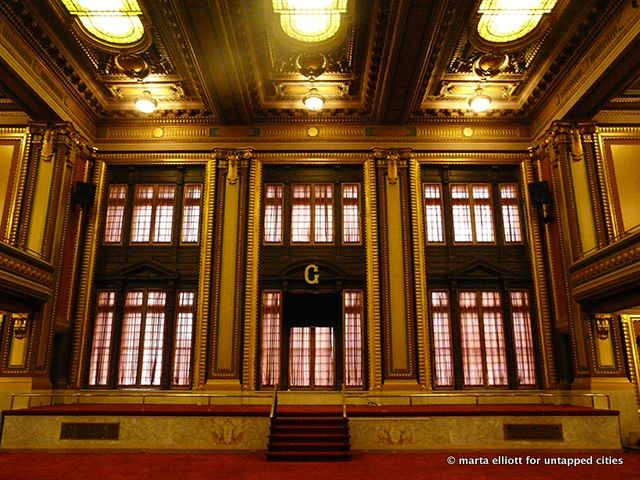
At 23rd Street and 6th Avenue sits the Grand Lodge of Masons, an otherwise ordinary looking New York City Building which replaced an earlier Grand Lodge built by Napoleon Le Brun in French Second Empire style. This current Grand Lodge has about a dozen rooms which contain no windows at all, and where meetings for 60 some number of lodges still take place. Despite the gilded appearance, each ornate room is made of painted plaster, from imitation stone to reliefs to frescoes. Check out more photographs from inside the Grand Lodge of Masons here.
Here is an image of the now lost original Grand Lodge:
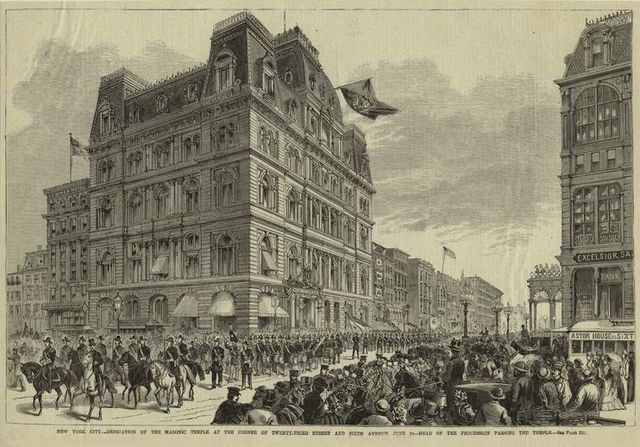
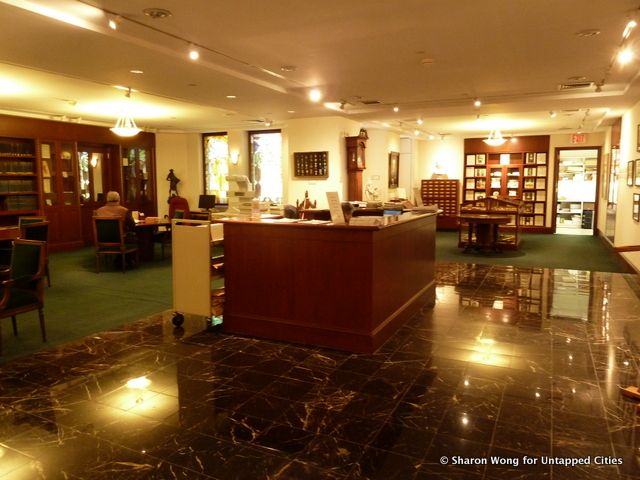
On the 14th floor of the same building is the Livingston Masonic Library. It is as much a repository for relics as for books, containing cases full of beautiful objects, each wielding their own special significance. Some of the most iconic are the building tools, symbols of the group’s possible beginnings among the guilds of stonemasons during the Middle Ages. There’s also an interesting collection of illustrations depicting possible scenes of Masonic rituals in the 1800s. The library is open to the public Monday, Wednesdays and Fridays. See more from the library collection here.

Fort Greene is home to several architectural masterpieces. The most famous among these is the Brooklyn Masonic Temple. Built in 1909, this Masonic temple is regarded as one of the most beautiful structures in the United States. According to The New York Times, the original intent of this structure was to be a meeting place for the Masons of Brooklyn (hence the name). In 1977, it was then sold to a “clandestine” Mason group. This group couldn’t afford the daunting cost of upkeep, so they rented out the space on a regular basis. The building now serves as a concert venue, “Masonic Boom.” Read more about the Fort Greene Historic District here.
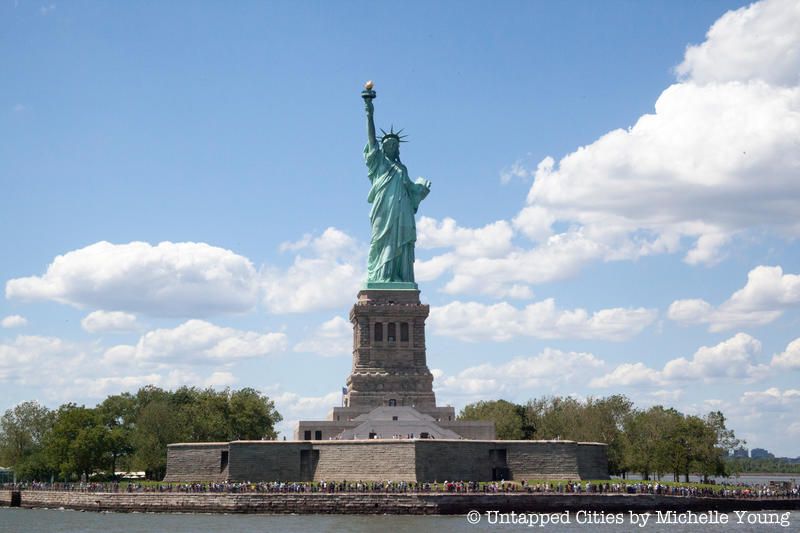
The masons presided over the cornerstone laying for the Statue of Liberty, a moment commemorated in a 1984 plaque in dedication to the masons on the 100th anniversary. In 1884, the grand master William A. Brodie laid the cornerstone with grand lodge members present. Brodie is reported to have said, “Why call upon the Masonic Fraternity to lay the cornerstone of such a structure as is here to be erected? No institution has done more to promote liberty and to free men from the trammels and chains of ignorance and tyranny than has Freemasonry.”

Built in the true Gothic method (and still unfinished), the Cathedral of St. John the Divine used actual stonemasons–Americans trained in the church Stoneyard by English masons. The New York City masons contributed to the fundraising for the great cathedral and a rendering of the church appeared on the cover of Masonic World in 1925. The magazine article stated “It is particularly fitting that the Masons, who were the principal builders of cathedrals and churches during the greatest cathedral-building period, should now have a prominent part in the movement to build America’s greatest cathedral.” The building is filled with odd symbols (mason or not, it’s not specifically addressed in the tours) such as a television in stained glass before its invention, pillars that show the destruction of New York City’s twin towers (before 9/11) and destruction of the Brooklyn Bridge.
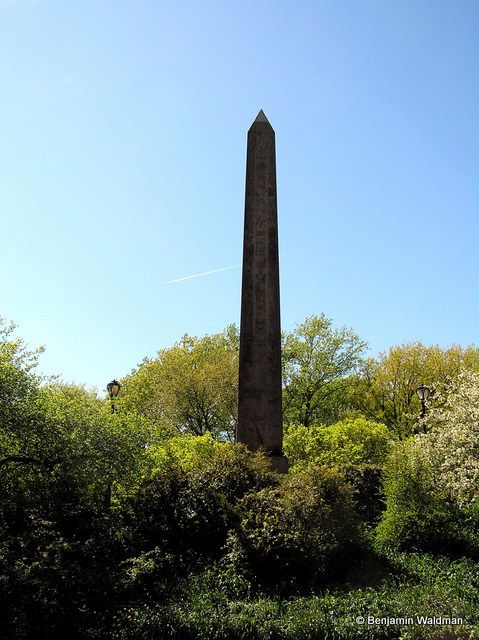 Cleopatra’s Needle today
Cleopatra’s Needle today
The Grand Master Mason of New York, “the Most Worshipful Jesse B. Anthony,” presided over the installation of Cleopatra’s Needle in Central Park, an obelisk from Egypt that had been moved from Egypt. It was one of the political and technological feats of the century, involving the builders of the Brooklyn Bridge, William Henry Vanderbilt, Lt Commander Henry Honeychurch Gorringe of the U.S. Navy, the commissioner of NYC’s parks, and the owner of the New York World paper. A parade of 9000 Freemasons marched up Fifth Avenue for the solemn laying of the cornerstone on October 11, 1880.
You can visit it today just south of the Metropolitan Museum of Art
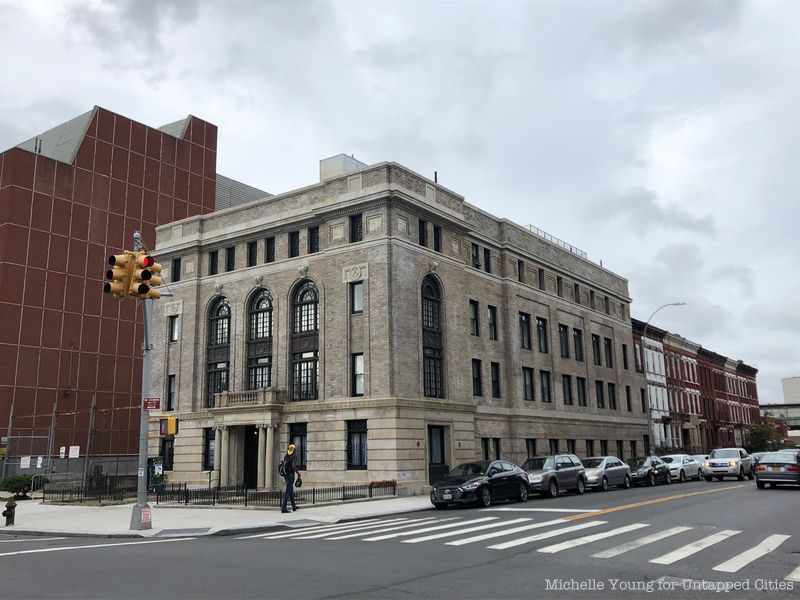
The Ridgewood Masonic Temple in Bushwick was built in 1920 and landmarked in July 2014, originally serving the Ridgewood Lodge No. 710, Cypress Hills Lodge No. 1064, and Star of Hope Lodge No.430, instituted April 9, 1857. It was designed in the Beaux-Arts style by Brooklyn architecture firm of Koch & Wagner. Both founding architects had served as president of the Brooklyn chapter of the American Institute of Architects. Since the masons moved out, the main hall has been used for concerts and parties, described by Curbed as “orgy-filled.”
This article also written in part by Benjamin Waldman, Samantha Sokol and Sharon Wong.
Subscribe to our newsletter